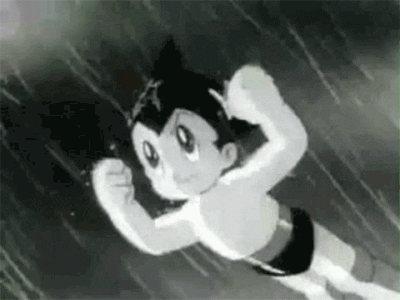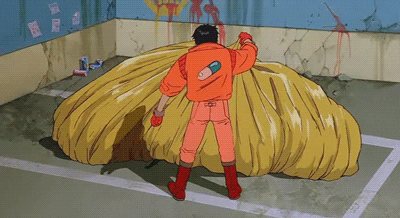From vivid colors to alluring characters, heart-wrenching storylines to hilarious dialogues, high-speed action scenes to romantic slow-motion frames, the anime industry has it all! Anime, with its exceptional visual language, has been a global phenomenon for quite a while, influencing numerous fields including literature, art, film, fashion, and even animation technology, with notable contributions from the best 3D animation company in India.
A unique storytelling medium that emerged from manga tradition, anime makes up about 60% of the total animations, globally. With its success, it makes no bones that the quality of animation and enchanting graphics are crucial factors when we talk about anime turning into a global phenomenon.
However, has anime always been a realm of game-changing animations? How did some production houses revolutionize Japanese animation and bring to use the magnificent artwork we see today? Read on to learn more about the anime from its birth till today.

THE ORIGIN OF ANIME

Considering how interesting the storylines of most anime are, the beginning of anime itself was just as fascinating. Inspired the drawing and cut-out animation techniques brought forward by France and the US, Japan stepped into the world of animation in 1917- the era of silent films. While people quite often talked about the high quality of these “manga films”, Japanese anime were overshadowed by the popularity of Disney in addition to being costlier when it came to production.
As Japan started to salvage its pieces after the catastrophic war, the president of Toei Film got inspired by the vivid colors in Disney’s Snow White and founded Toei Animation. His dream? To become the Disney of the East.
Hakujaden was Toei Goda’s first anime film and many more followed, creating the world’s biggest animation industry. Postwar, Japanese citizens faced job scarcity due to which the company was able to attract an outstanding team of animators at low salaries.
However, if we were to pinpoint a specific moment that changed the destiny of anime, it is probably the release of Astro Boy – the first anime TV series. Released in 1963, the show became an instant hit and gave birth to the anime boom.
HOW IS ANIME MADE?

Now before we start to talk about how the style of animation has changed over the decades, we must realize what goes on behind the curtains of the anime world.
APPROVING THE IDEA
Every production, anime or not, requires a story idea. While storylines for anime may originate from anywhere, popular manga is usually preferred by production studios since they already have a fanbase.
STORYBOARD
While the script may describe the scenes and dialogues, the story still requires a storyboard for visual representation. The storyboard artists turn the script into a visual guide to help the director communicate to the animators what exactly he wants.
GOING DIGITAL
Nowadays, no matter how animation begins, it inevitably ends up as digital media. Everything must be colored when the animation teams have completed their work. The colorful cells are placed against the backgrounds according to the layouts. This is also where CG components are used in current anime. Everything must now be composited together to form the final video.
THE SHOW ISN’T OVER YET!
Anime is not a silent film! This suggests there’s still a lot of work to be done. Because voice artists must bring the characters to life, the final or near-final 3D animation is submitted to the dubbing studio, where voice tracks can be created. We still require ambient sound, sound effects, music, and any other audio work such as mixing and mastering.
DECONSTRUCTING ANIME, DECADE BY DECADE

It has been over a century since the release of the first ever anime – Nakamura Gatana – in 1917. Over more than 100 years, anime has developed dramatically in terms of animation quality, style, plot, and characters. While the advancement of technology can be a factor contributing to the evolution of anime, it is not the only one. Change in viewers’ taste in genres, an increase in creative focus as well as the outlook of the anime community has brought anime from what it was in 1917 to what it is in 2022.
1960S

Astro Boy can be considered one of the greatest animes of the 60s. Being the first popular Japanese TV series, Astro Boy is credited with being the embodiment of anime as we know it.
If we take a look at the animation style, we’ll see that the artwork isn’t very detailed. It has no color and the animation is very similar to that of Disney. Granted that they had no high-tech facilities or digitalized way of drawing, the animators followed a concept-to-animation path, and the cartoon-style characters laid down the foundation for various anime to come.
1970S

The biggest anime series from the ’70s through the ’80s and beyond was probably Doraemon. The animation featured retro colors and a thick outline. Graphic-style animation has come a long way from what it was in the 70s. It is now animated in 3D in contrast to its 2D animation versions in the past.
1980S

Dragon Ball Z brought a huge change to what animation was in the 80s. There was a sharper color contrast in the palette. The colors were more vibrant and there was more clarity in the actions. However, the biggest change was in the character style. The body had more detailing and could be easily related to human anatomy structures.
1990S

Pokemon, a popular favorite from the 1990s, was a watershed moment in the animation and artwork sectors of anime. Back then, the creators imagined an anime-specific art style. The eyes in this anime appear to be more detailed. The designs of the characters were more lifelike. The anime that was released during this decade had a distinct art style that was unique to anime.
2000S

With the arrival of the 21st century, groundbreaking technology completely revolutionized the world of animation. In anime such as Fullmetal Alchemist Brotherhood, there was a drastic change in the setting environment. Along with this, the eyes and hair of the characters showcased more details and there were stronger shadows which gave the anime a more realistic look.
2010S

The biggest anime series of the 2010s was no doubt Hajime Isayama’s Attack on Titan. While it has one of the strongest storylines to be seen in anime, it also showcased a different and more detailed animation technique. It featured high-quality lighting and rigging along with camera placements and unique angles as well as cinematic shots.
2020S

While the decade has just begun, we have seen a lot of changes in the style of animation that is trending amongst most Japanese animation studios. Violet Evergarden has had one of the most outstanding animations to date with alluring colors and vibrancy. The animation does not only focus on making the character alluring but the background as well. The foreground and background not only stand out but also mesmerize the viewers.
THE FUTURE OF ANIME

Anime at its best is diverse, vivid, unrestrained, and surprising. Anime, like any other media, must adapt and change. With filmmakers such as Yonabayashi, Shinkai, Hosoda, and a plethora of others, anime has a bright future ahead of it.
Anime has evolved into a dynamic and progressive media genre, thanks to animation methods such as CGI, changes in visual style trends, and the global access to online streaming available to today’s audiences.
FAQ’S
The global popularity of anime can be attributed to its exceptional visual language, diverse storytelling, and influence across various fields such as literature, art, film, fashion, and animation technology. Additionally, the quality of animation and enchanting graphics play crucial roles in anime’s global success.
Anime originated in Japan in the early 20th century, drawing inspiration from animation techniques introduced by France and the US. Despite initial challenges and competition from Western animation, Japanese anime gained momentum post-war, with notable contributions from studios like Toei Animation and the release of groundbreaking series like Astro Boy in 1963.
The creation of anime involves several stages, including developing story ideas, storyboarding, digital animation, voice acting, and post-production. Popular manga often serves as a source of storylines, while storyboard artists visually represent the script before animators bring it to life through digital animation.
Anime has evolved significantly over the decades, with advancements in technology, changes in viewers’ tastes, and the creative focus of the anime community driving innovation. From the simplistic artwork of the 1960s to the high-definition, detailed animation of the 21st century, anime has continuously pushed the boundaries of visual storytelling.










 (03KEUPK4394K1ZN)
(03KEUPK4394K1ZN)